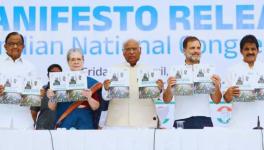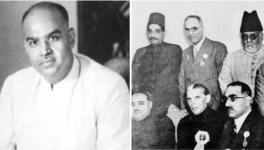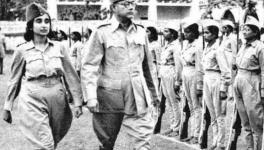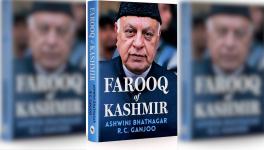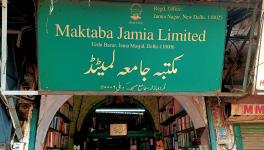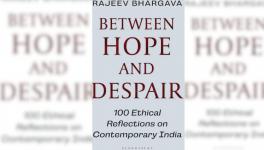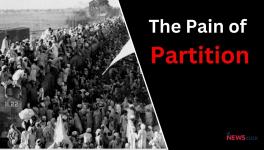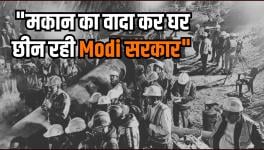Women in Freedom Struggle Were Not Behind Men in Any Way
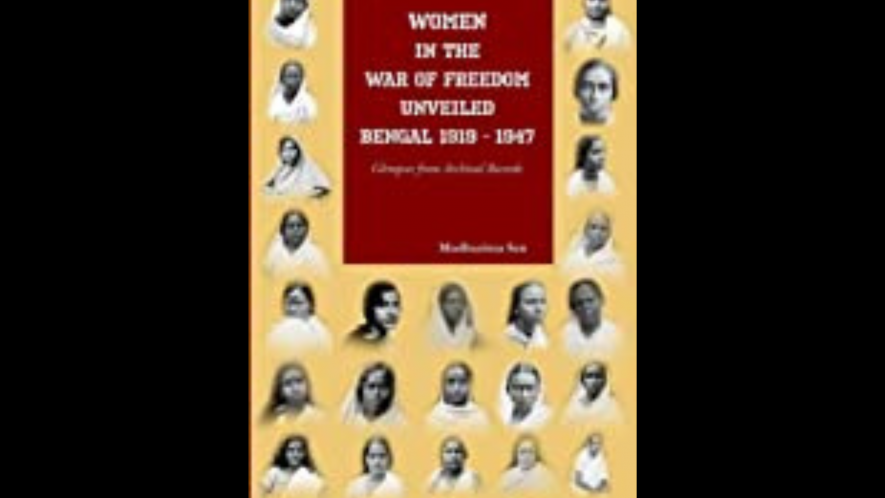
Women in the War of Freedom Unveiled: Bengal. Image Courtesy: Amazon
Women were not behind men in the long and arduous struggle for India’s freedom. The first person to hoist the tricolour at the conference of international socialists held in Stuttgart, Germany, in 1907 was a Parsi woman. She was Bhikaji Cama. As early as 1917, Annie Besant, a British theosophist, became the president of the Indian National Congress. Keep in mind also that the colonising country, Britain, gave women the right to vote only a decade later, in 1928.
In a solid archival attempt Dr Madhurima Sen, archivist at the West Bengal State Archives, has given a glimpse of women freedom fighters towards whom history has not been kind.
The outstanding merit of her book, Women in the War of Freedom Unveiled: Bengal, 1919-1947, published by Hyphen Books, is that it brings these well-known as well as obscure women fighters to life through their actual photographs sourced from the police and Intelligence Bureau records. Sen also informs us that the process of photographing convicts first started in 1874 at the recommendation of the Superintendent of Alipore Jail in Calcutta. Interestingly, the photographs taken in this course could not be viewed by the suspects, convicts, or their relatives and friends. The jail authorities never entertained applications from relatives for the pictures of detainees or former detainees, convicts or ex-convicts, whether alive or deceased.
The first time that files on women activists and revolutionaries were started to be maintained was in 1919. The colonial Intelligence Bureau took up this task. But thanks to its entrenched patriarchal mindset, it sought first to go after the male relatives of the female suspects to urge them to refrain from nationalist and revolutionary activities. Sen writes, “As the recognition of women in society was still bound by their relationship as daughters, sisters, wives, or mothers… in the eyes of the rulers, women’s role was at this stage largely confined to short time helping hands of underground revolutionaries.”
More often than not, the trope of morality was invoked by the colonial police to stamp out women revolutionaries. For instance, Sen shows that in the case of Sudhangshubala Sarkar, a medical student, who had links with the so-called garden boys of the Alipore Bomb case of 1908, the police file described her as a “lady of immoral character”.
Revolutionary activism was seen as a “strictly masculine project with women primarily residing in its periphery”. Very soon, especially after the Non-Cooperation Movement, the gendered boundaries of revolutionary activism were breached, forcing the Criminal Investigation Department (CID) to spend “pages in preparing confidential reports on women’s involvement in the armed revolutionary activities”.
Although women’s participation in revolutionary activities peaked during the period when Gandhian non-violence peaked as a creed, many women revolutionaries took the road of armed struggle against imperial rule. The Deepali Sangha of Dacca (now Dhaka, Bangladesh) was the first all-female “terrorist” organisation. It was started by Lila Nag in 1923. In 1928, a similar group named Chattri Sangha was formed in Calcutta (now Kolkata). Feminist monthlies in Bengali also cropped up during this period. Some of these were Jayasree, started by Nag in 1931 and Mandira, founded by Kamala Chatterjee in 1939. Dukoribala Debi was the first woman convicted of revolutionary activities during the First World War.
The famous Mahila Atmaraksha Samiti was started in 1942 by prominent female communists such as Renu Chakravarti, Manikuntala Sen, and Juiful Roy. The Samiti was most successful in initiating the Tebhaga Movement of sharecroppers in Bengal. The movement posed the greatest challenge to the rotten zamindari system in Bengal. On the spread of Marxist and communistic ideas in Bengal, Sen writes, “The ideological appeal of Marxism, the egalitarian vision and generally emancipating thrusts of left-wing politics were attractions for women from diverse social backgrounds.” Even before organised communist activists percolated among Bengali women, we can see the presence of women leaders like Dr Prabhabati Dasgupta. She earned her doctoral degree from Frankfurt, Germany, and during her period of activism in Calcutta, she led the famous Scavenger’s Strike of 1928. Although not a member of a political party, she famously came to be known as Dhangarer Maa, or Mother of the Sweepers.
Another major strength of the book is that it provides the readers with the names of the women captives and their organisational affiliations. The list runs into forty-three pages. Most women belonged to left-wing organisations such as the Communist Party of India (CPI), Mahila Atmaraksha Samiti, Jugantar, Anushilan Samiti, Student’s Federation of the CPI, and the Bengal Provincial Student’s Federation affiliated with the CPI. Interestingly, not a single entry in this exhaustive list of women convicts belongs to any organisation of the right-wing such as the Hindu Mahasabha, which had a sizeable presence in Bengal.
The book would have been even more enlightening if the author had delved a little more into Muslim women revolutionaries. Although Sen has pointed out the narrow social base of the revolutionary movement in terms of an over-presence of upper and middle-class/caste Hindu women in the revolutionary tradition, the reasons for this are not sufficiently interrogated. Female Muslim revolutionaries such as Jobeda Khatun and Khursheed Begum Qureshi figure in the book but not as elaborately as one would have desired. This could be perhaps for the lack of evidence and documentary material on their lives. I hope that for her next book, Sen will pick up the subject of female Muslim revolutionaries.
The author is a lawyer practising in Delhi. The views are personal.
Get the latest reports & analysis with people's perspective on Protests, movements & deep analytical videos, discussions of the current affairs in your Telegram app. Subscribe to NewsClick's Telegram channel & get Real-Time updates on stories, as they get published on our website.









